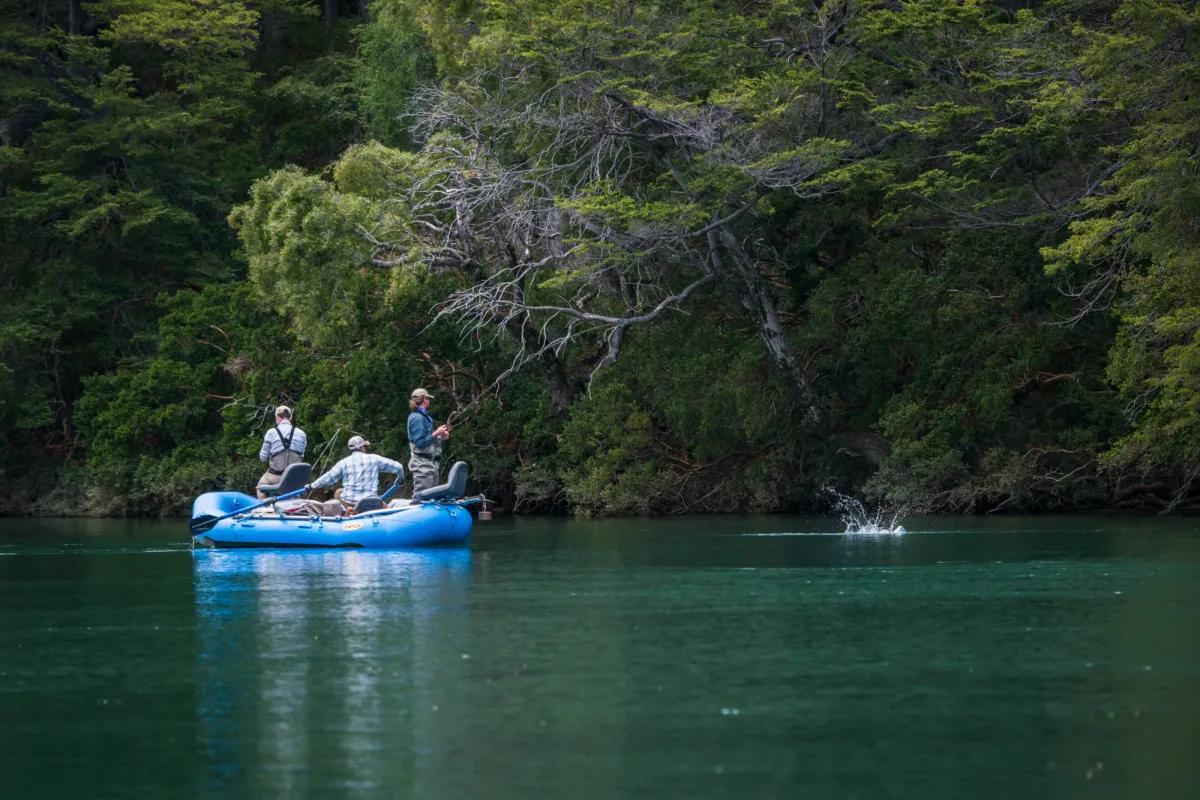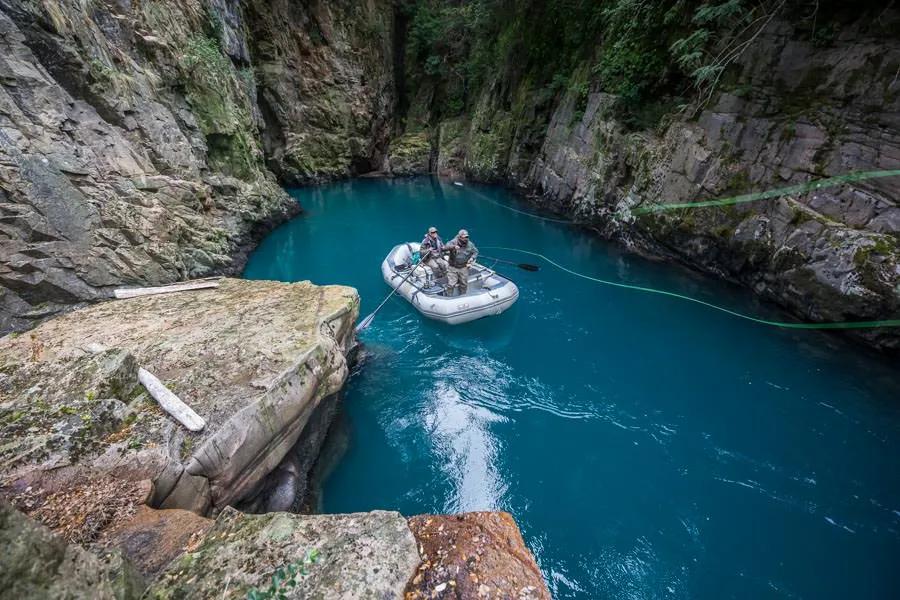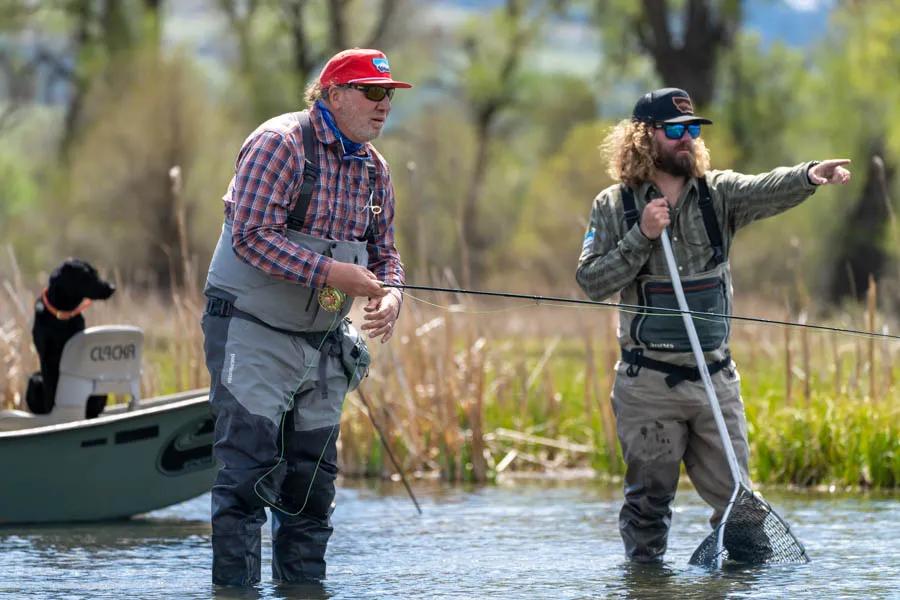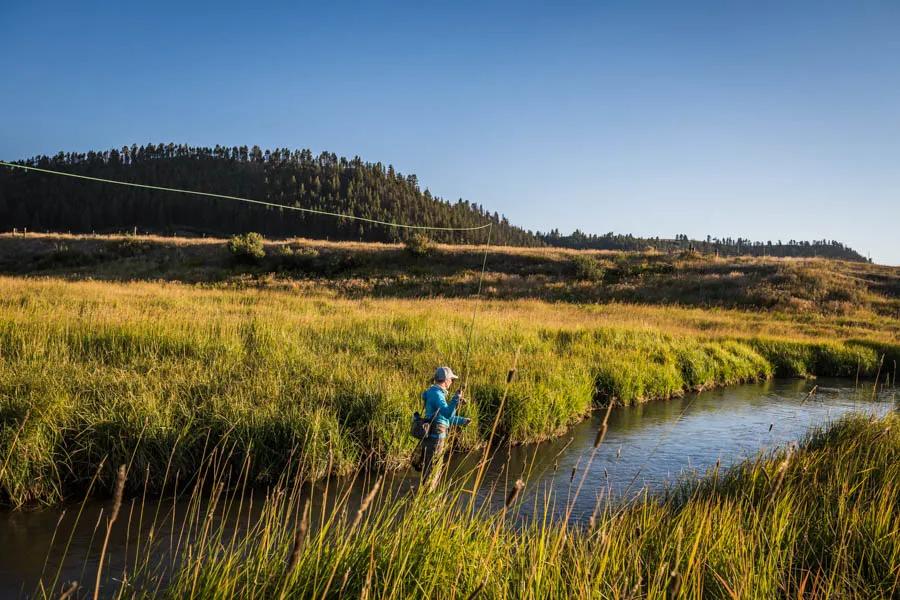
Mastering the cast is perhaps the most important skill in fly fishing. Whether it is being able to drop a dry fly in front of a rising trout at 50 feet on the Missouri River, double-hauling a bonefish fly at 70 feet in Cuba, or a bow and arrow cast on a small stream, the ability to have an accurate cast is essential to success. A standard forward cast and back cast are important for every situation in fly fishing, but there are several other casts that are essential for success.
Learn to Double Haul
A double haul is useful in many scenarios. Technically speaking, a double haul allows you to create more line speed during your cast. Line speed allows the fly line to be cast more efficiently. This is crucial when casting in the wind, wanting to cut out wasted casts with excessive false casts, or a variety of other useful times--for example needing to cast a fly under an over-hanging branch or to pick-up and re-cast quickly. This might just be the ticket to a monster trout.

Use a Reach Cast
An important component of getting a good drift is mending the fly line once it lands on the water. A reach cast allows you to mend the fly line before it lands on the surface of the water which means your mend is already working for you before the fly is. The best way to accomplish a reach cast is after you stop the rod on your forward cast, create an extended follow-through by allowing your arm to cross your body. This puts a mend in the line before it even lands on the water. The trickiest adjustment to a reach cast is when the cast is to not land across your body, but it is to land on the other side of your body. When this occurs, the follow through isn't extended, but the rod is pulled backwards. A reach cast is a great tool when a Montana fly fishing trip.
Be Better at Reading Water
By knowing where fish are most likely to be, your fly can spend more time in the best place rather than wasting time drifting where fish are less likely to be. Trout will hold and feed in different types of water based on the fishing conditions. For example, in high summer when streamflows are often low compared to earlier in the summer, trout may slide into riffles and faster waters because there is more dissolved oxygen. When fly fishing in winter trout will be found in deeper, slower water because the food is in the form of nymphs crawling on structure on the bottom of the river. Trout of any size, but more often trout over 16 inches, often utilize other trout and baitfish as a primary source of food. When searching a trout stream and deciding where to cast to be the most efficient, target those areas where a trout may be waiting to ambush another fish. Those places are most likely, but not always, undercut banks, deep water next to shallow water, hiding near structure, and even shallow flats where smaller fish may be feeding.

Don't Skimp on Gear
A good fly cast takes some skill to master. But even a good caster can be hampered with subpar or outdated gear. Many anglers spend several hundred to a thousand dollars on a fly fishing rod but then skimp on the fly line. Or they invest in a quality, high-performance fly line but then do not put extra effort into keeping the fly line clean. With the myriad of choices available for excellent fly rods, purchasing a excellent performing fly rod is easy with some monetary investment. Even with an entry level fly rod, adding a high-quality and well cared for fly line can be the difference between making a cast that really counts and maximizes efficiency to casts that do not fully get the job done. Today fly lines incorporate a variety of technologies that result in longer casts, quicker load times, and more accuracy. Manufacturers also now make fly lines that are more durable than lines of the past. However, that technology doesn't matter if you do not take care of your fly lines. After every fishing session take five minutes and clean your fly line. Fly line cleaning packets are available at most fly shops, but a clean wash cloth with clean water is enough. Soap and scrubbing is not necessary and can actually cause harm. If you fish from a drift boat or raft often it is very important that you clean your line after every outing as boats and rafts can carry a lot more dirt than just walking and wading.

Improve Your Body Position and Stance
Because where you start your cast matters greatly to where your cast ends up, being aware of body position is important to making every cast count. To determine where to stand--and how you stand--the best cast depends on several factors. Factors include casting distance, the type of water, and the feeding habits of the fish. How far you can cast is important, but how far you accurately cast is more important. A good cast at 30 feet often catches more fish than a poor cast at 60 feet. This is especially true when fly fishing for bonefish, tarpon, permit, or a finicky spring creek trout. If you are fishing slow, clear water then a quiet approach is required before you position yourself to make a cast. In faster water like a riffle or in pocket water you can move a little more freely. If you are standing on or very close-to the bank that you are targeting, you may need to adjust your feet and hips to make it easier to perform a tension cast/water haul cast. Lastly, take into account the intensity of the feeding activity of a fish. In most instances when a fish is feeding with high intent, then you can probably position your body closer than if they are in a holding lie or not feeding at all. Body position can also affect casting efficiency when fishing a stonefly hatch on the Madison or Yellowstone Rivers. When stoneflies hatch on most Montana rivers, the rivers are often running high and fast and the fish are feeding on insects near bankside structure. When fishing along the same bank on which you are standing on or wading near, you need to place your feet and hips at an angle that allows you to cast effectively. This is often much closer to the bank than you might think, and sometimes it is even standing on the bank. From spring creeks to large canyon waters, body position is very important.
For many anglers the act of casting a fly rod provides enjoyment. The physical motion is not demanding, in fact many doctors suggests it is physically therapeutic. Some anglers were even drawn to fly fishing because of the meditative nature of casting a fly rod and fly line. For some of us catching a fish is the culmination of all things coming together and the right time--that embodiment of hope fulfilled for at least one moment in time. Yet even with the simple enjoyment of casting a fly rod we still often measure success by catching a fish. The best way to do that is maximize each and every cast so it has the best chance to be the cast that catches a fish.

